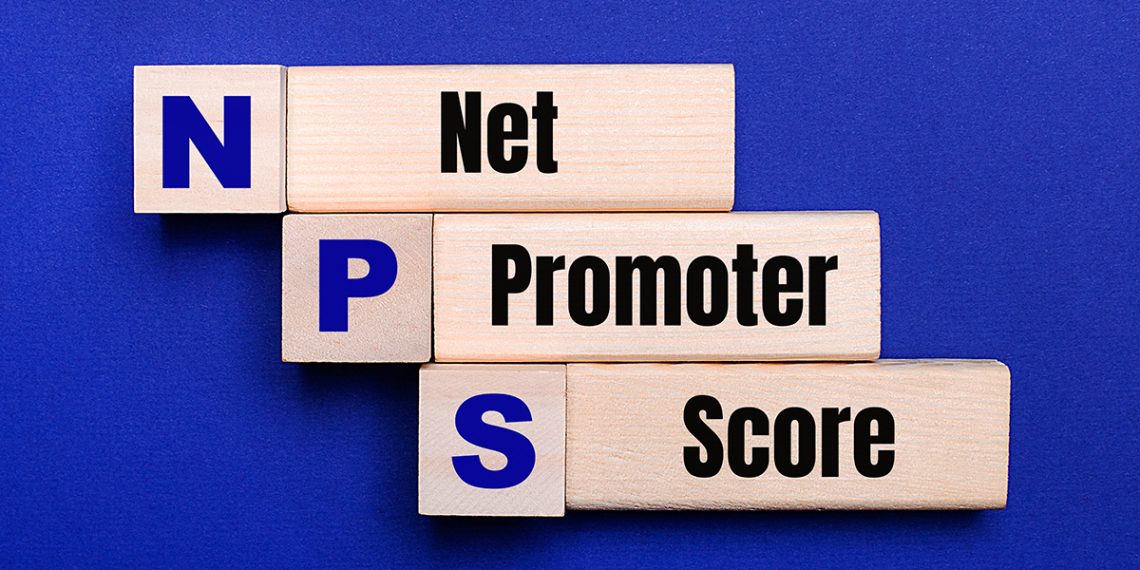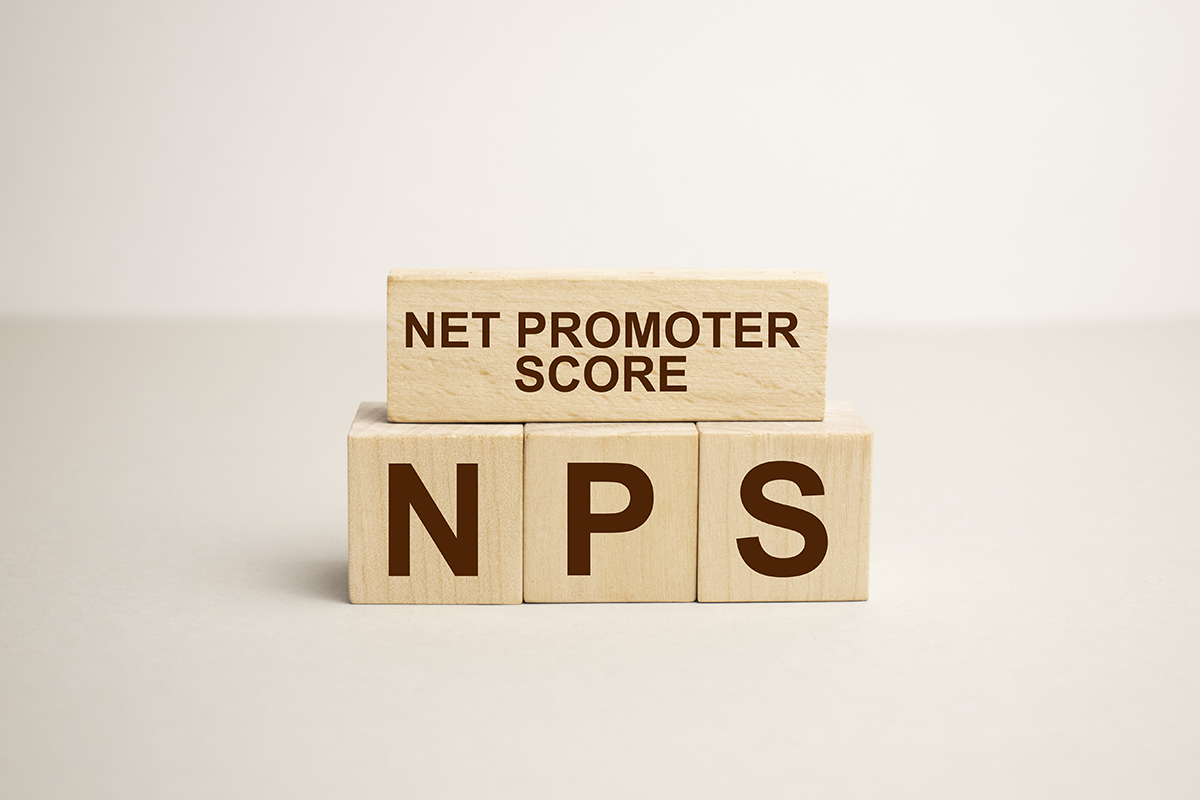Getting your NPS score high is absolutely crucial to business success, there’s no doubt.
However, do you actually know what a good Net Promoter Score (NPS) score is? Or maybe you do, and you’re simply looking for ways to improve your current score. Either way, that’s what we’re going to help with in this article!
I’m sure you already know what NPS is. But let’s recap briefly:
- NPS is simply a metric that gauges customer satisfaction and loyalty. It’s calculated by asking your customers how likely they are to recommend your company to others on a scale of 0-10.
The ratings from respondents are then categorised as being promoters (9-10), passives (7-8), and detractors (0-6) before your overall NPS score is calculated. Check out our complete guide on NPS for a full breakdown on how the final score is calculated.
In this article however, we’ll take a deeper look into NPS and focus some tips for achieving a good net promoter score.
Keep reading to learn more!
Collect feedback with JustFeedback
JustFeedback helps your business increase profits and reduce risk by improving your customer experience
What is a Good NPS Score?
This is actually a very difficult question to answer. So although, there’s no definitive answer, generally it’s commonly agreed that an NPS above 0 is considered average and anything above 50 is considered excellent.
Obviously, the higher your score, the better! But, rest assured, even if your score isn’t as high as you’d like, you can always take steps to improve it. Which we’ll look at now.
How to Improve Your NPS Score?
Let’s take a look at some actionable steps you can take to improve your NPS score:
1. Collect feedback regularly
The first step to improving your net promoter system score is to simply start collecting regular feedback from your customers. Collect feedback however you can, whether it’s through surveys, interviews, or even just casual conversations.
Getting the feedback is key, not how you get it!
When you collect feedback, be sure to:
- Get specific feedback: Avoid vague comments like “your service is OK” or “I’m happy with the product”, because feedback like this is far too general to provide any meaningful insights. Instead, ask specific questions if you can.
- Be timely: Try and collect feedback as quickly as possible while the customer experience is still fresh. This will help ensure feedback is accurate and relevant.
- Be consistent: Set a schedule and collect feedback regularly, whether it’s once a week, month or quarter. Consistency is key so you can analyse and monitor your feedback progress over time.
- Be personal: Feedback is more valuable when it’s coming from a real person. So make sure to reach out to your customers individually, rather than just relying on automated surveys.
2. Analyze the feedback
Once you’ve collected the feedback, it’s time to start analyzing it so you can identify patterns in the data and hopefully identify any common trends. This will help you understand what’s working well and what needs to be improved.
For instance, if you notice that a lot of customers are unhappy with your customer service, then you know that’s an area you need to focus on.
When analyzing the feedback, keep in mind that:
- Not all feedback is equal: Some feedback will be more valuable than others. For instance, those with positive experiences are likely to be more honest than those with negative experiences. So when analysing detractor data, try and focus on the key message and not on any overly negative emotional feedback.
- Look for the root cause: It’s not enough to just identify the problem. You also need to figure out why it’s happening. For instance, if a customer is unhappy with your customer service then you need figure out this was actually do with the service, or something out of your control. Such as long queue waits are peak times?
- Be objective: It can be easy to get defensive when you’re reading negative feedback, but try to look at it objectively and see it as an opportunity to improve.
- Be open to change: Take action based on the feedback to improve things, and welcome the change. Ultimately, acting on feedback to make positive changes is a great way to improve your NPS score.
3. Take action
Once you’ve analyzed the feedback and identified areas for improvement, it’s time to start taking action. This might involve making changes to your products or services, training your employees, or changing your policies.
But whatever you do, make sure that you:
- Communicate the changes: Customers need to know that you’re taking their feedback seriously and making changes in response. Otherwise, they’ll just assume that you don’t care about their experience.
- Be patient: Changes won’t happen overnight, and it might take some time for your customers to notice the difference. So don’t get discouraged if you don’t see an immediate increase in your NPS score.
- Stay focused: There will always be more that you could do to improve your NPS score. But it’s important to focus on the changes that will have the biggest impact. Otherwise, you’ll just end up spreading yourself too thin.
4. Monitor your progress
Once you’ve made changes and acted on the feedback, it is essential to monitor the progress over time to be sure that the changes are actually having the desired effect.
The best way to do this, is to simply keep collecting feedback from your customers at regular intervals and comparing the NPS score over time. This will help you see if your efforts are making the difference you want.
It’s also important to keep in mind that your NPS score will fluctuate over time. So don’t get too discouraged if you see a dip in your score. Just focus on the long-term trend and continue taking steps to improve your score bit by bit.
Also, when you’re monitoring your progress, keep in mind that:
- NPS is just one metric: Don’t rely on just your NPS score to measure your all-round success. There are a number of other important metrics, such as customer satisfaction and retention rates which you should also monitor.
- Compare yourself to others: It can be useful to benchmark your NPS score to other businesses in your industry. This will give you an idea of how your performing relative to your industry and your peers.
- Monitor the trends: It’s not enough to just blindly track your NPS score over time. You also need to actively monitor changes and take corrective action if needed. For example, if your NPS decreases, that could be a sign that something is wrong.
5. Get help from an expert
If you’re really struggling to improve your NPS score with the above tips, then it might be time to call in expert help. Thankfully, there are plenty of consultants and agencies that specialize in NPS and can help.
This is a great way to leverage their expert knowledge to gain valuable insights and guidance on how to improve your score and also implement the changes needed.
If you do choose to get help from an expert, make sure that you:
- Find someone with experience: It goes without saying, that not all consultants are created equal. So, make sure you find someone who has a lot of experience with improving NPS, particularly for companies in your industry if possible.
- Get a customized approach: Find someone who takes the time to understand your business, as ultimately every business is different. So you may need a customized approach that takes your unique needs into account.
- Set realistic expectations: Don’t expect miracles, especially not overnight. An expert can help you improve your NPS score, but they can’t guarantee results.
Improving your NPS score can be a challenge, but it’s worth the effort.
That’s why we strongly recommend you take action to improve your NPS score, and create a more positive customer experience whilst also improving your bottom line along the way!
How Does NPS Work?
The NPS survey is typically a one-question survey that asks customers how likely they are to recommend your company by rating between 0 to 10. The responses are then categorized into three groups:
- Promoters (9-10): These customer are the happiest and tend to be loyal to you brand, and will actively promote it to others.
- Passives (7-8): These customers are satisfied but could be persuaded to do business with your competitors.
- Detractors (0-6): These customers are not happy, and cause a serious risk to damaging your brand by publicly sharing negative feedback.
The surveys are really important it can help identify dissatisfied customers early, so you make changes that can create a positive experience and improve customer loyalty.
How to Calculate NPS
Calculating your NPS score is fairly simple. All you need to do is ask your customers the following question: “How likely are you to recommend us to your friends?”
Then, using a scale of 0-10, have your customer provide a rating for their answer. Once you have their responses, simply subtract the percentage of detractors from the percentage of promoters.
This will give you your final net promoter score. That’s it, it really is that simple!
Why Is NPS Important?
NPS is really important because it’s a great way to measure satisfaction and loyalty among your customers. Plus, it’s a great indicator for predicting business growth.
Don’t take our word for it, many studies have shown that companies with high NPS scores tend to grow faster than those with lower scores.
Additionally, remember that happy customers are more likely to stick around and continue doing business with you. Plus, they’re also more likely to tell others about your company, which in turn can help you attract new customers.
Factors That Effect NPS Scores
It’s important to remember that there’s a number of factors which can impact your NPS score. Let’s consider some common ones you should be aware of:
1. The quality of your products or services
Remember, whenever a customer purchases they have an expectation of what they want. So if your products or services don’t meet this expectation, then your customers are likely to give you a low NPS score.
So the best way to combat this is to ensure, that you’re offering a high-quality products or service that meets customer expectations at all times.
For example, if you’re in a hotel, your rooms should be clean and comfortable. If you’re a restaurant, your food should be fresh and delicious.
2. Your customer service
Your customer service is also an important factor in your NPS score. If customers have a bad experience with your customer service, they’re likely to give you a low NPS score.
Make sure you train your customer service team well and give them the resources they need to succeed.
3. Your pricing
Be realistic and fair with your pricing options. Your customers will know If your charging too much, and they may just respond by giving you low NPS feedback. If possible, set prices that are competitive and in line with what customers expect to pay.
When setting prices, it’s also important to consider the perceived value of your products or services. For example, obviously if you offer a luxury product or service, then customers may be more likely to expect and pay a higher price.
4. Your marketing
Your marketing strategy can also affect your NPS score. For instance, if customers feel overwhelmed and bombarded with far too much marketing, then they may give you a low NPS score.
To avoid this, be sure to keep your marketing targeted and relevant to your ideal customer. Also, don’t be afraid to experiment with different marketing channels to see what works best for you and your customers.
5. Your company culture
Your company culture can also have an impact on your net promoter score benchmarks. If employees are unhappy, they’re likely to give you a low NPS score. Especially, if they’re also customers as well as employees. This is common in industries such as retail.
When setting up your company culture, make sure you focus on creating a positive and supportive environment for both your employees and customers. This will create a well rounded environment that benefits both groups.
6. The overall customer experience
The overall customer experience is a very important factor in determining your NPS score. If customers have a bad experience with your business, then it’s very likely that they’ll give you a low NPS data score.
So make sure you’re constantly evaluating and improving the customer experience all the way along the customer journey. But importantly, pay attention to every touchpoint and aim to always create a positive experience.
7. Your industry
It’s worth noting that NPS scores can vary by industry. With some having higher NPS scores on average than others. In fact, generally more competitive the industries tend to attract a lower over all NPS score among their customer base.
But don’t get detracted. A great way to offset this effect, is to focus on creating a unique customer experience that sets you apart from your competitors.
8. Your location
Believe it or not, but your location can also have an impact on your overall NPS rating. If you’re in a city with a lot of competition, customers may be more likely to give you a low NPS score. Simply because they have more choice over who to do business with.
Make sure you understand the demographics of your area and what customers are looking for. Plus, if you’re a local business, make sure your business is conveniently located and easy to find.
Final Words
Hopefully now you know exactly why a good NPS score is so valuable for your business, and how you can go about improving yours if you need to.
The journey may be long and slow, but it will absolutely be worth it. As a high NPS score is a great way to help ensure the long-term success of your business!
Want To Know More? Check Our FAQ Below!
What is a good average NPS score?
The average net promoter scores is 50 or higher is generally considered to be good.
What are NPS score ranges?
NPS scores can range from -100 to 100. However, most scores fall somewhere between -50 and 50.
Is 72 a good Net Promoter Score?
Again, this depends on the context. If your industry average score is lower than 72, then 72 would be considered a good score. If your industry averages are higher than 72, you may want to strive for a higher score.
What is the best NPS score?
NPS score run on a scale from -100 to +100. So the highest NPS score that you can achieve is 100. But this assumes that every single respondent is a promoter. This is unrealistic.
It’s great to aim for perfection, but realistically achieving a score of 50+ will put your business in a good position. This is where many successful companies rank.
What is a positive Net Promoter Score?
A positive Net Promoter Score means that more loyal customers are likely to recommend your business to others than not. A score of 50 or higher is generally considered to be positive.
What is a good NPS score?
A score of 50 or higher is generally considered to be good.
What is considered a high NPS score?
A high NPS score is typically anything above 70.
Is a high NPS score good?
Yes, a high NPS score is generally considered to be good. This means that you’ll have a high number of promoters who are actively promoting your product.
High promoter numbers are ideal, it’s essentially free advertising! Customers that rate as promoters will speak about your business often without any prompt or payment.
What does an NPS score tell you?
An NPS score can give you insight into how likely your customers are to recommend your business to others.
What is a good NPS score range?
A good NPS score typically falls somewhere between 50 and 100. However, there is no definitive answer.
Which company has the best NPS score?
Companies with a strong focus on customer experience tend to have higher NPS scores. Some examples include Apple, Amazon, and Google.



